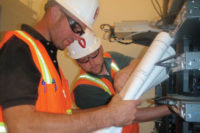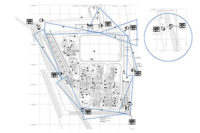Revenue Detail on Resi Projects
Technologies may be converging, but when it comes to the revenue models of security dealers and electronic systems contractors, the differences are vast.




Electronic systems contractors generate significantly higher average revenue per residential installation project than do security dealers. The median average revenue for ESCs in 2011 was $13,300, while for security dealers it was $4,000. This is based on data collected in the third quarter of 2011.

Electronic systems contractors generate significantly higher average revenue per residential installation project than do security dealers. The median average revenue for ESCs in 2011 was $13,300, while for security dealers it was $4,000. This is based on data collected in the third quarter of 2011.







A confluence of both opportunities (energy management, mobile technologies) and challenges (depressed home construction, reduced consumer spending) keeps pushing installation companies into market segments in which they’ve never gone before. One result is that more security dealers are seeking sales of residential systems that go beyond traditional security, especially those targeted for the existing home market. Another result is that electronic systems contractors (ESCs) are looking at security technologies, in addition to their more traditional products of home theater and audio, as a way to boost their revenues.
This convergence has led to product offerings from both industries that appeal to each set of installers; for example, systems that have security as the familiar platform, but also do energy management for the cost-conscious homeowner. But until now, no one has addressed how the convergence among these two particular industries plays out in their respective business models.
New research from Indianapolis-based Custom Electronic Design & Installation Association (CEDIA), which SDM supported through collaboration on the survey base and by publication of the results, takes a closer look at how business models compare in these two industries. The research also serves as a starting point for watching the convergence trend in coming years.
The study, “Size and Scope of the U.S. Residential Electronic Systems Installation Market 2011,” shows, for example, that while security installers expected to complete more than three times the number of installation projects than did ESCs, their average median revenue per project was $4,000 compared with $13,300 for an ESC.
There is a dramatic difference between basic and high-end security dealers and virtually no middle. The high-end increases the average project remarkably, while basic installations fall below $5,000 for the majority, according to the research. Compare this with project values for ESCs, which cover a wide spread of revenues; more than 25 percent of ESCs expected to earn $25,000 and up from 2011 projects, according to the study.
More findings from the study can be found on CEDIA’s website at www.cedia.net/press_media/MarketSizing.php. SH
Looking for a reprint of this article?
From high-res PDFs to custom plaques, order your copy today!












